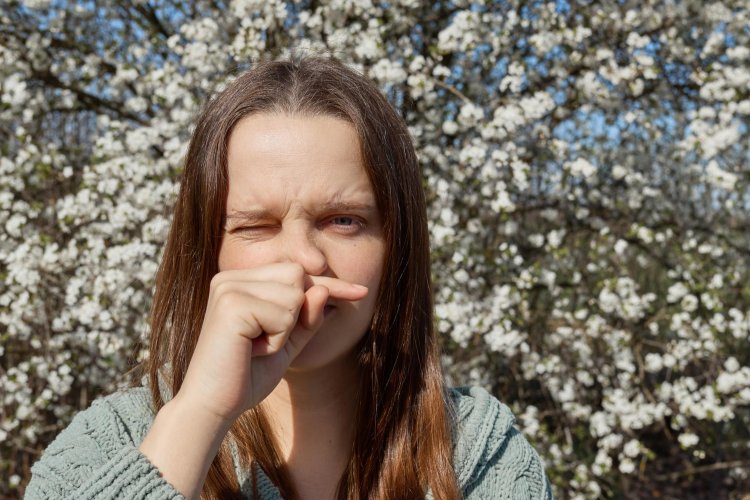Antihistamines: Exploring Their Mechanisms, Classification, Uses, Side Effects, and Precautions
Antihistamines represent a vital class of medications utilized primarily for the management of allergic reactions and related symptoms. Understanding their mechanisms of action, classification, uses, potential side effects, and precautions is crucial for both healthcare professionals and individuals seeking relief from allergic conditions.

Mechanism of Action
Histamine, a key mediator of allergic responses, binds to specific receptors in the body, particularly the H1 receptors, triggering various allergic symptoms. Antihistamines function by competitively binding to these receptors, thereby inhibiting histamine's effects. This antagonistic action prevents or alleviates symptoms such as itching, sneezing, nasal congestion, and watery eyes associated with allergic reactions.
Classification of Antihistamines
First-generation Antihistamines
These antihistamines, including diphenhydramine, chlorpheniramine, and promethazine, were among the earliest developed. They are characterized by their ability to cross the blood-brain barrier readily, leading to central nervous system effects such as sedation and drowsiness. Despite their efficacy in symptom relief, their sedative properties limit their use during the day.
Second-generation Antihistamines
Designed to address the sedative side effects of first-generation antihistamines, second-generation antihistamines such as loratadine, cetirizine, and fexofenadine exhibit reduced penetration of the blood-brain barrier. Consequently, they are less likely to cause drowsiness and are preferred for daytime use.
Uses
Antihistamines find widespread application in the management of various allergic conditions, including:
- Allergic Rhinitis: Alleviate symptoms such as sneezing, itching, runny nose, and nasal congestion.
- Allergic Conjunctivitis: Relieve itching, redness, and watering of the eyes.
- Urticaria (Hives) and Pruritus: Reduce itching and hives associated with allergic skin reactions.
- Anaphylaxis: Adjunctively manage symptoms in severe allergic reactions.
Furthermore, certain antihistamines, such as dimenhydrinate and meclizine, are utilized for their antiemetic properties in the prevention and treatment of motion sickness. Some first-generation antihistamines are employed in the management of insomnia due to their sedative effects.
Side Effects
While generally well-tolerated, antihistamines may cause various side effects, including:
- Sedation and Drowsiness: Particularly common with first-generation antihistamines.
- Dry Mouth and Eyes: Anticholinergic effects may lead to dry mouth and dry eyes.
- Dizziness and Impaired Coordination: Some individuals may experience dizziness or difficulty with balance.
- Blurred Vision: Temporary changes in vision, particularly in predisposed individuals.
- Gastrointestinal Disturbances: Constipation and gastrointestinal upset may occur.
Precautions and Considerations
Before initiating antihistamine therapy, healthcare providers and individuals should consider several factors:
- Drug Interactions: Potential interactions with other medications, including central nervous system depressants.
- Preexisting Conditions: Use cautiously in individuals with certain medical conditions.
- Pregnancy and Lactation: Safety varies among different agents, necessitating consultation.
- Age Considerations: Pediatric and geriatric populations may require dosage adjustments.
In conclusion, antihistamines represent invaluable pharmacotherapeutic agents in the management of allergic conditions, offering relief from a spectrum of symptoms. Understanding their mechanisms, classification, uses, potential side effects, and precautions is essential for safe and effective therapeutic outcomes. By balancing efficacy with safety considerations, healthcare providers can optimize antihistamine therapy to enhance the quality of life for individuals with allergic disorders.
#MechanismOfAction #Antihistamines #Classification #Uses #SideEffects #Precautions #AllergicConditions #Healthcare #TherapeuticOutcomes #HealthTips
Disclaimer:
The information provided in this article is for educational purposes only and should not be considered medical advice. If you have any health concerns or are experiencing symptoms, it is important to consult with a healthcare professional, such as a doctor or clinic, for proper diagnosis and treatment. Always seek the advice of your doctor or other qualified health provider with any questions you may have regarding a medical condition. Do not disregard professional medical advice or delay in seeking it because of something you have read in this article.
What's Your Reaction?





















